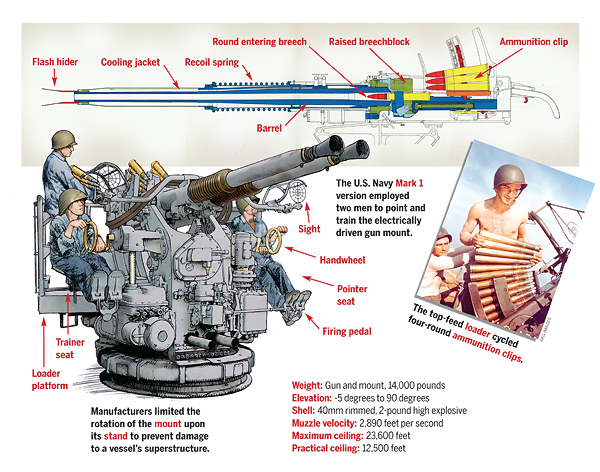
Having purchased Vickers 2-pounder pom-pom guns for its ships in 1922, the Swedish navy asked its own native Bofors for a more capable anti-aircraft weapon. In 1928 the weapons firm responded with a smaller version of a 57mm semiautomatic gun it had developed to engage torpedo boats. The gun entered production in late 1933 as the Akan M/32, known internationally as the 40mm L/60.
International orders and licensing requests flooded in. The Royal Netherlands Navy was first to install the anti-aircraft gun, aboard its light cruiser De Ruyter. In April 1935 Bofors introduced a towable carriage, leading to orders from the Belgian, Polish and Norwegian armies. In 1937 the British adopted a Bofors fitted with a flash hider as the QF (quick-firing) 40mm Mark I. The improved QF Mark III became the standard British light anti-aircraft weapon, 2,100 being built in Britain, Canada and Australia by the end of World War II.
In the United States, Chrysler Corp. produced 60,000 guns and 120,000 barrels during the war. Emplaced on Dutch-designed Hazemeyer twin mounts, the Bofors became a mainstay of anti-aircraft defense aboard U.S. Navy warships. The Army mounted twin Bofors on its M-24 tank chassis, dubbing the new weapon the M19 gun motor carriage. Although Bofors later developed a lighter, higher-velocity AA weapon (the 40mm L/70), L/60s remain in use by armed forces worldwide.




